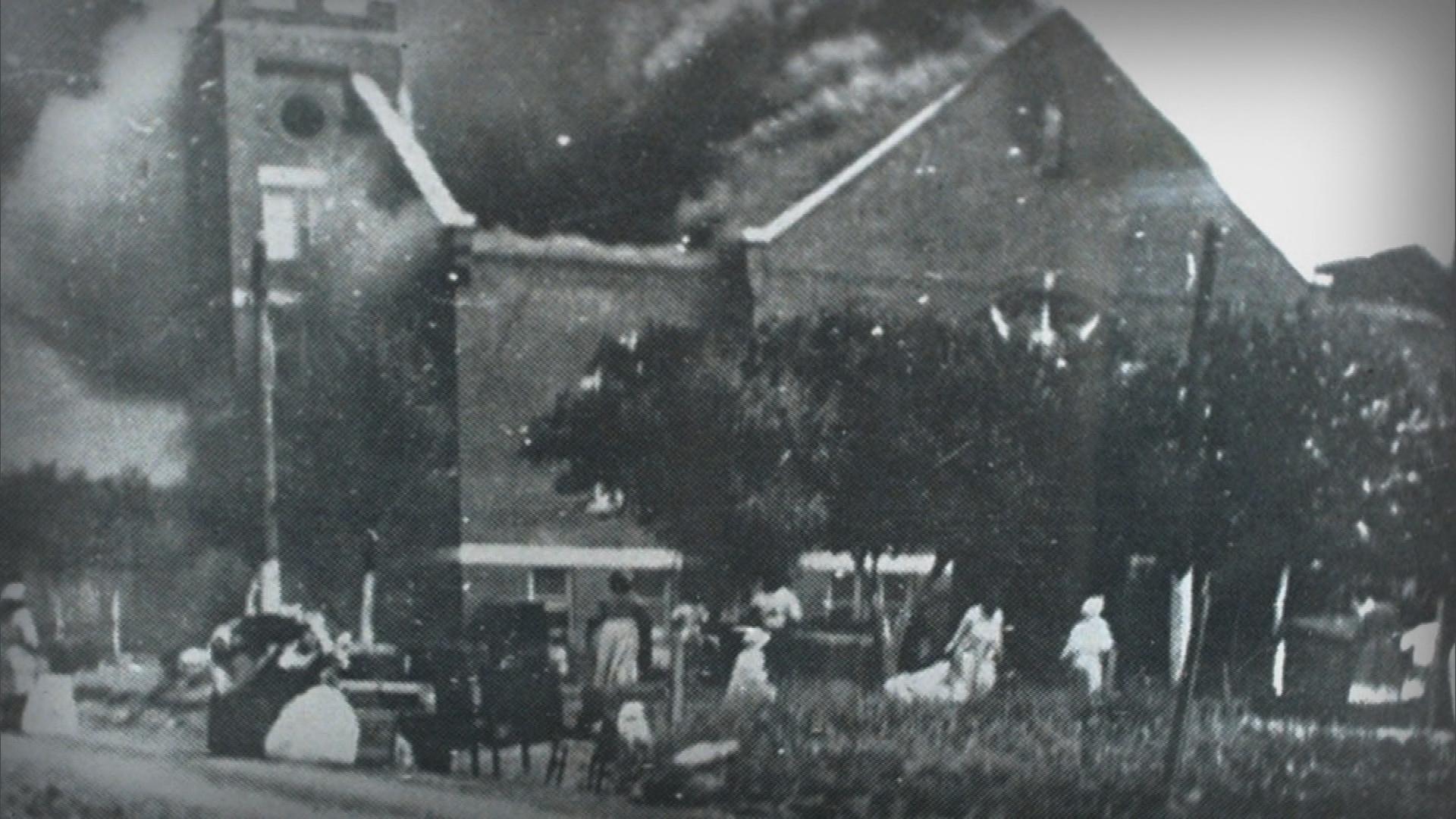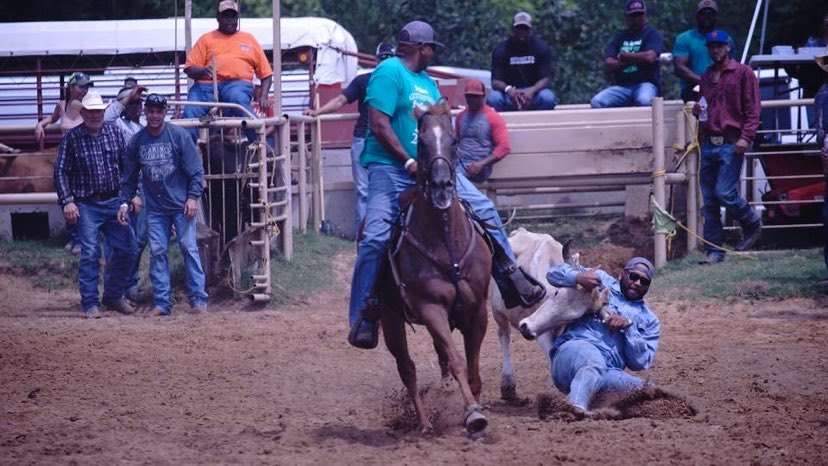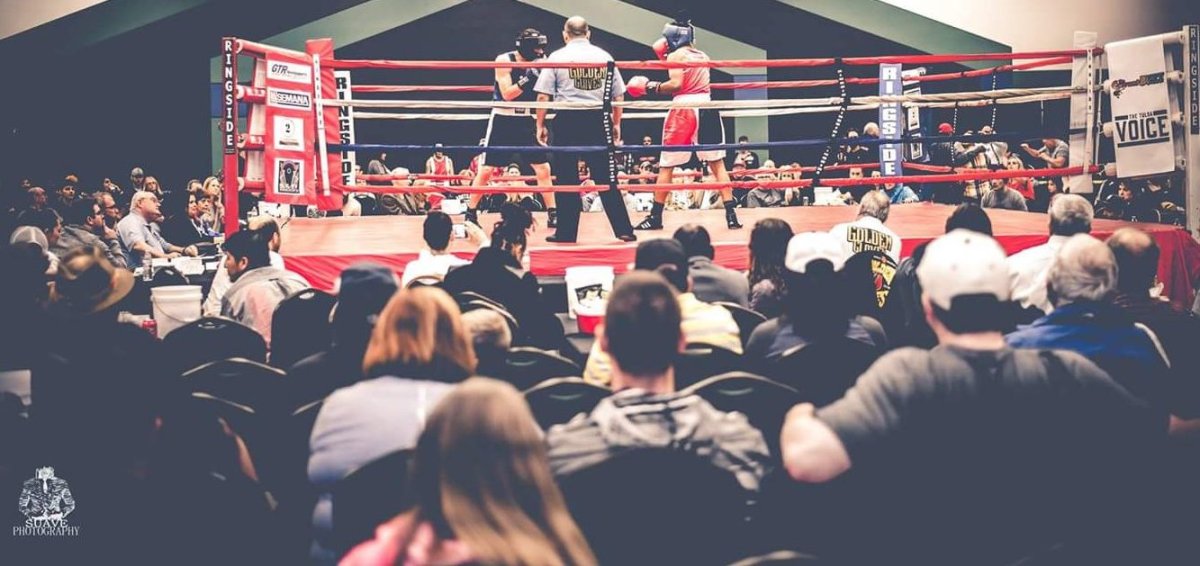
Forensic scientists announced Monday that there are “anomalies” consistent with mass graves that warrant further examination, including excavation
The scientists said they detected the anomalies beneath the ground at Oaklawn Cemetery and an area in Tulsa called the “The Canes,” where the Interstate 244 bridge crosses the Arkansas River. They recommended further radar survey and physical excavation of the sites.
Phoebe Stubblefield, a forensic anthropologist from the University of Florida who specializes in human remains identification, called the findings promising, but also cautioned that “we don’t know what lies beneath.”
Scott Hammerstedt, a scientist who worked on the geophysical survey, said at Oaklawn “there are quite a lot of anomalies here consistent with mass graves” near a part of the cemetery where city records show 18 black people were buried in June 1921.
In another section of the cemetery, they discovered “what very much looks like a human-dug pit,” Hammerstedt said. “This is very likely a candidate to be a mass burial. We may need to investigate further.”
Tulsa officials had said earlier that the next phase of the investigation could include excavation and an investigation by the State of Oklahoma’s Medical Examiner’s Office into causes of death.
“The cause of death determination would be an important step to the investigation,” city officials said in a statement, “as remains will be close to 100 years old and a Spanish Influenza outbreak occurred in Tulsa in 1919 prior to the Race Massacre in 1921.”
If mass graves were found, the city and oversight committee — which is made up of descendants of massacre victims, community leaders, historians and scholars — would decide on next steps, city officials said, “as it relates to storing remains, DNA testing and genealogical research, and commemorating the grave sites and honoring the remains.”
Tulsa City Councilor Vanessa Hall-Harper sat in the Carver Middle School auditorium with about 300 other people as the investigators presented their findings. She said she felt a sense of relief.
“I always knew these mass graves existed,” Hall-Harper said. “We are pleased with the fact there is some evidence mass graves have been located. We are excited about the next steps of uncovering a cover-up and laying these bodies to rest respectfully as they should have been nearly 100 years ago.”
Tulsa Mayor G.T. Bynum said the city is obligated to find out what happened in 1921 as the city prepares to commemorate the 100th anniversary of the massacre. He reopened the investigation after a Washington Post story focused on unresolved questions about the rampage.
“There is a commitment from me and my team that we will follow the truth where it takes us,” he said Monday night. “We will pursue every avenue possible to look at these sites.”
The team of scientists, led by the Oklahoma Archaeological Survey based at the University of Oklahoma, searched Oaklawn Cemetery and Newblock Park — two of three sites that were identified in a 2001 Tulsa Race Riot report as possible mass grave locations. The city is still in negotiations with the owner of the third site, Rolling Oaks Memorial Gardens, to allow radar scanning.
Monday’s announcement comes more than 20 years after renowned forensic anthropologist Clyde Snow found anomalies with “all the characteristics of a dug pit or trench with vertical walls and an undefined object within the approximate center of the feature,” the Tulsa Race Riot Commission wrote in its 2001 report.
The commission, created by the Oklahoma legislature in 1997 to establish a historical record of the massacre, recommended “a limited physical investigation of the feature be undertaken to clarify whether it indeed represents a mass grave.”
But the investigation was closed without a physical study of the sites.
For decades, the rampage was left out of textbooks in Oklahoma and few people spoke about what had happened. The massacre began on May 31, 1921, when a white mob marched on Greenwood, one of the richest black communities in the country. It was often referred to as “Negro Wall Street” and later “Black Wall Street.”
The mob gathered after a black teenager, who was working as a shoe shiner in downtown Tulsa, was arrested and accused of assaulting a white woman “on a public elevator in broad daylight,” according to the Tulsa Race Riot Commission Report, released in 2001.
There was a scuffle between “angry white vigilantes gathered at the courthouse intent on lynching the shine boy” and armed black men intent on protecting him, according to the commission report. A shot rang out, and the violence began.
Historians believe as many as 300 black people were killed. Much of Greenwood was burned to the ground. The mob, “some of them government agents,” destroyed 35 square blocks of Greenwood, according to the 2001 report. The destruction included more than 1,250 homes, churches, schools, businesses, a hospital and a library.
Survivors reported that bodies were tossed in the Arkansas River or loaded onto trains, making it difficult to count the dead. In 1998, city and state officials began investigating the claims of mass graves in Tulsa.










